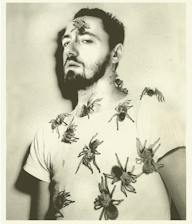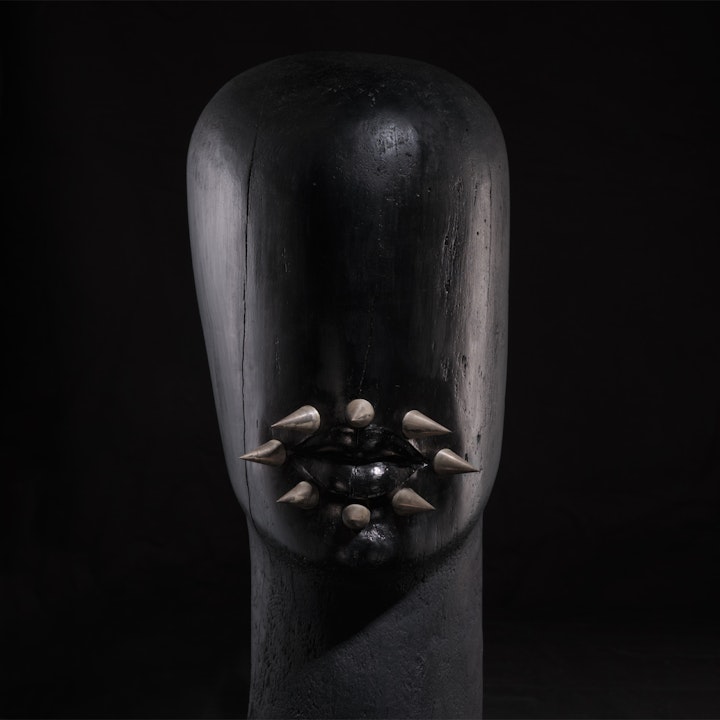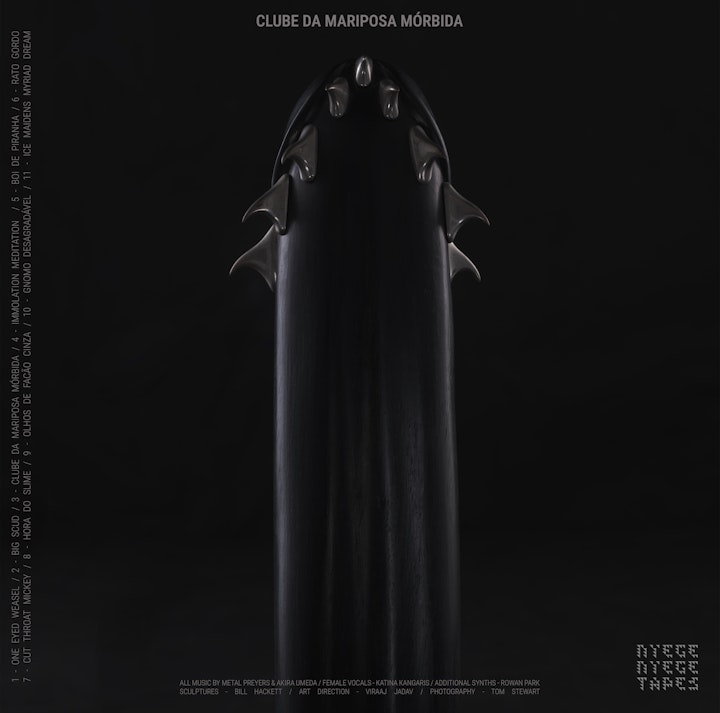Clube da Mariposa Mórbida /Akira Umeda & Metal Preyers
Collaged from juddery electroacoustic rhythms, analog synth segments, environmental recordings, text-to-speech poems and what Akira Umeda calls "ghost sounds", 'Clube da Mariposa Mórbida' is a transcultural voyage into pure sonic fantasy. The São Paulo-based DIY maverick and former historian trades impressions and delusions with Nyege regular Metal Preyers, imagining gory VR avatars, lovestruck arachnids, supermassive black holes and the titular morbid moth club, absurd iconography that stains their warped, mutable soundscapes. Metal Preyers and Umeda starting working on this project following Umeda’s sprawling 'Gueixa', an hour-long postmodern mixtape made from 202 fragments of the artist's seemingly bottomless library of experiments. Spotting a similarity in the way they were both driven by collage and curation, Metal Preyers member Jesse Hackett embarked on four whirlwind months of exchange, sending Umeda audio snippets and concepts that the Brazilian eccentric would decode with Google translate. Umeda's contribution was more uncanny; listening to the sketches on repeat until the sounds created "evasive impressions" in his mind, he used analog instruments and text-to-speech software to recreate these phantom occurrences. "Specters are never clear and always shifting, so the experience of synthesizing them is similar to clay modeling," he explains. "To record these synthetic ghost sounds is like firing ceramic pots."
And the hybrid nature of their collaboration doesn't begin and end there. Both Hackett and Umeda work within visual art: Umeda has made films, ceramics and illustrations, while Hackett works on jewelry and sculpture with his father Bill, the proto-punk artist from the 1960’s best known for his mysterious occult like sculptures and for creating Keith Richards' iconic skull ring. Two of Bill's artworks are featured on the album art and shadow the record's themes, both carved in wood that's stained with a shellac dye made from old 78rpm records. Umeda and Hackett's music is similarly recycled, as if they're dousing fresh art with long forgotten colors. On the opening track 'One Eyed Weasel', decelerated Brazilian funk syncopations are twisted with weightless voices, orchestral flourishes and canned screams before being lowered into eerie beds of unplaceable white noise. Even at the best of times, it's difficult to pry apart what's real and what's synthesized; cyborg voices in different languages stutter around tangled, colorful musical threads: tablas, overdriven psych guitars, cryptic santur chimes and microtonal reed echoes. But Umeda and Hackett's music isn't an accompaniment to some post-Hassell Fourth World concept, it's a projection into parallel future where our patchwork of cultures, digital and otherwise, has been reduced to hazy memories.
On 'Boi de Piranha', defective temple bells punctuate blown-out spiraling beats and unsettling backmasked chatter, and ruffled, featherlight rhythms and mbira-like repeating sequences quiver through sleazy 4/4 architectures on 'Cut Throat Mickey'. Unfolding like a hypnagogic soundtrack to an unwritten queer post-apocalyptic noir, 'Clube da Mariposa Mórbida' retches and heaves in the glamor of decay; slithering electro-plated music box earworms burrow into 'Hora Do Slime', while on 'Olhos De Facão' humid synth sequences chew on bone-rattling acoustic percussion and dissociated traces of humanity. It's Akira Umeda’s and Metal Preyers most bizarre offering yet, a few paces beyond 'Shadow Swamps' murking shadows towards Umeda's kaleidoscopic concrète jungle.
credits
releases July 11, 2025



